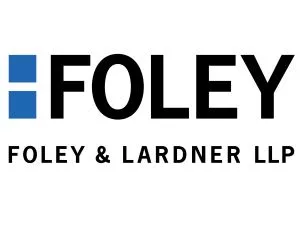- within Food, Drugs, Healthcare and Life Sciences topic(s)
- in United States
- with readers working within the Banking & Credit, Healthcare and Property industries
- within Coronavirus (COVID-19), Government and Public Sector topic(s)
In July 2025, the Centers for Medicare & Medicaid Services (CMS) released the CY 2026 Medicare Physician Fee Schedule (PFS) proposed rule (the Proposed Rule), which included several proposed changes that aim to expand Medicare's telehealth policies to improve access, increase flexibility, and better reflect advancements in technology and clinical practice.
Comments on the Proposed Rule may be submitted until 11:59 p.m. EDT September 12, 2025. For CMS' summary of all the proposed changes, please see the following:
Key Changes in the Proposed Rule
A. Streamlining the Telehealth Services List and Review Process
Currently, CMS follows a five-step process for making changes to the Medicare Telehealth Services List (a list that specifies which services can be performed as telehealth and are not limited to in-person encounters):
- Confirm whether the service is separately payable under the Medicare PFS.
- Determine whether the service is subject to Medicare's special payment rules for telehealth services (42 U.S.C. § 1395m(m)).
- Review the HCPCS code for the service to ensure each component of the services can be furnished via an "interactive telecommunications system," as defined by 42 C.F.R. § 410.78(a)(3).
- Assess whether the service aligns with a service already approved for permanent telehealth coverage.
- Evaluate whether performing the service via telehealth provides comparable clinical benefit as if performed in-person.
In the Proposed Rule, CMS stated stakeholders found it unclear how much clinical evidence was needed to make a service permanent on the Telehealth Services List, and for new or rarely used services, it was often difficult to find relevant studies to support the addition of the service. CMS acknowledged the current five-step process does not give enough credit to physicians' and practitioners' professional judgement and that as clinicians, they are best suited to determine whether a service can be safely and effectively provided via telehealth.
In response, CMS proposes simplifying the process by removing Steps 4 and 5 and eliminating the "provisional" or permanent" designations. CMS stated all services currently listed or added in the future on the Telehealth Services List would be considered permanent. CMS noted it reserves the right to remove any services from the list based on internal review or stakeholder feedback. Also, CMS emphasized that the addition of a service to the Telehealth Services List does not mean it is appropriate to be furnished via telehealth in every clinical scenario. Instead, physicians or practitioners must use their professional judgement to determine the appropriate modality on a case-by-case basis.
B. Proposed Additions and Deletions of Telehealth Codes
CMS stated it received multiple requests to add various services to the Medicare Telehealth Services List for CY 2026. Of note are the telemedicine E/M services (98000–98015). CMS explained these services do not meet the criteria under Step 1 of the review process because they are not separately reimbursable under the Medicare PFS when provided in person, and therefore, will not be separately reimbursable when provided via telehealth.
CMS proposes adding the following codes to the Medicare Telehealth Services List:
- G0473 – Group Behavioral Counseling for Obesity
- G0545 – Infectious Disease Add-On
- 90849 – Multiple-Family Group Psychotherapy
- 92622 and 92623 – Auditory Osseointegrated Sound Processor
CMS also proposes removing G0136 – Social Determinants of Health Risk Assessment, explaining that the resource costs associated with this service are already captured in existing codes, such as E/M visits.
C. Removing Frequency Limits for Telehealth Visits
Before the COVID-19 public health emergency (PHE), CMS limited how often physicians and practitioners could provide certain services via telehealth due to concerns about patient acuity and complexity. The frequency limitations included:
- One subsequent inpatient visit every three days.
- One subsequent nursing facility visit every 14 days.
- One critical care consultation service per day.
During the COVID-19 PHE, CMS temporarily removed the frequency limitations to ensure patients could access necessary care remotely. When the COVID-19 PHE ended in May 2023, the frequency limitations technically resumed, but CMS exercised enforcement discretion and did not strictly apply them through the rest of 2023. For CY 2025, CMS formally suspended the frequency limits again.
Now, CMS proposes to permanently eliminate frequency limitations for the following codes:
- Subsequent Inpatient Visit: 99231, 99232, 99233
- Subsequent Nursing Facility Visit: 99307, 99308, 99309, 99310
- Critical Care Consultation Services: G0508, G0509
CMS' analysis of claims data showed that these services are rarely furnished often enough to meet the limitations, and less than 5% of beneficiaries who received the services received them via telehealth. CMS reiterated that physicians and practitioners are best positioned to decide, case by case, whether telehealth is clinically appropriate, balancing patient choice, safety, and the clinical circumstances. CMS reminds physicians and practitioners that removing the frequency limitations does not mean the services are always appropriate via telehealth, but rather that they should use their judgment to decide what modality is appropriate.
D. Permanent Audio-Video Direct Supervision
CMS requires certain Medicare Part B services, including diagnostic tests and incident-to services, to be furnished under one of three supervision levels by a physician or other practitioner: general, direct, or personal supervision. Historically, direct supervision has meant the supervising practitioner must be physically present in the office suite and immediately available but not necessarily in the same room. During the COVID-19 PHE, CMS allowed "immediate availability" to be met virtually through two-way, real-time audio-video technology. This flexibility was extended through December 31, 2025.
For services furnished after December 31, 2025, CMS proposes to permanently allow direct supervision to include virtual presence via audio-video technology (excluding audio-only) for all services described under 42 C.F.R. § 410.26, except those with a global surgery indicator of 010 or 090, due to the higher patient safety risks associated with these more complex or intense procedures. This policy would also apply to applicable services under 42 C.F.R. § 410.32, including cardiac, pulmonary, and intensive cardiac rehabilitation services.
CMS emphasizes again that this does not mean virtual supervision is appropriate for every service or patient and that physicians and practitioners must exercise professional judgment to determine the appropriate supervision modality in each case.
E. Coverage Expansion for ADHD Digital Therapeutics
CMS proposes expanding payment for digital mental health treatment (DMHT) codes G0552, G0553, and G0554 to include certain FDA-authorized digital therapeutic devices for attention deficit hyperactivity disorder (ADHD) that are used as a complement to clinician-supervised treatment and meet special controls, such as using validated measures of effectiveness. CMS acknowledged that technologies and DMHT therapies are evolving rapidly and that it currently lacks sufficient information to establish national pricing for devices captured by G0552. Payment for G0552 will therefore continue to be determined by the applicable Medicare Administrative Contractor. CMS is also seeking input on whether to establish coding and payment policies for devices for the treatment of gastrointestinal conditions, sleep disorders, and fibromyalgia.
F. New Remote Monitoring (RPM/RTM) Coverage
CMS proposes new codes for remote physiologic monitoring (RPM) and remote therapeutic monitoring (RTM) that would cover 10–19 minutes of management time in a calendar month and new device supply codes that would allow for data transmission over a period of 2–15 days per 30-day period. Read our article, "Remote Patient Monitoring (RPM) and Remote Therapeutic Monitoring (RTM): What You Need to Know About CMS' Proposed Changes," for further discussion about proposed key changes to remote monitoring services.
G. Increased Originating Site Facility Fee Reimbursement
CMS proposes raising the telehealth originating site facility fee payment (Q3014) from $31.01 to $31.85 for CY 2026.
Not Included in the Proposed Rule
One notable omission from the Proposed Rule is any mention of the current flexibility allowing distant site practitioners to bill under their currently enrolled practice location instead of their home address when delivering telehealth services from home. This policy was extended for CY 2025 after strong stakeholder support, which highlighted concerns about safety, privacy, and administrative burden. Despite calls to make the flexibility permanent, CMS did not address it in the Proposed Rule. Given its impact on telehealth practitioners, stakeholders should consider urging CMS to explicitly continue this flexibility or make it permanent.
Make Your Voice Heard
Stakeholders are encouraged to participate in the comment process and share their insights on the Proposed Rule. Comments may be submitted until 11:59 p.m. EDT September 12, 2025. Stakeholders may submit comments electronically here or via regular or express mail to the following address:
- Regular Mail: Centers for Medicare & Medicaid Services, Department of Health and Human Services, Attention: CMS-1832-P, P.O. Box 8016, Baltimore, MD 21244-8016
- Express Overnight Mail: Centers for Medicare & Medicaid Services, Department of Health and Human Services, Attention: CMS-1832-P, Mail Stop C4-26-05, 7500 Security Boulevard, Baltimore, MD 21244-1850
All correspondence, including attachments, must include a reference to "CMS-1832-P".
Bottom Line
The Proposed Rule takes meaningful steps toward modernizing Medicare's telehealth framework by simplifying the Telehealth Services List review process, permanently allowing real-time, audio-video supervision in certain circumstances, removing frequency limitations for certain services, and expanding DTx and RPM/RTM coverage — changes that could expand the scope of telehealth services and reimbursement. Also encouraging is CMS's deference to physicians' and practitioners' professional judgment in determining the appropriate service modality for their patients, as well as its recognition that technology will continue to advance and enable more services to be safely provided via telehealth and reimbursed under the Medicare PFS.
However, the Proposed Rule's overall impact remains tied to the statutory Medicare telehealth framework. The statutory telehealth flexibilities, which include waiving geographic restrictions and allowing the beneficiary's home to be an eligible originating site for any telehealth service, are set to expire on September 30, 2025, without further legislative action. Stakeholders are encouraged to continue urging Congress to either extend the flexibilities or make them permanent.
The content of this article is intended to provide a general guide to the subject matter. Specialist advice should be sought about your specific circumstances.



